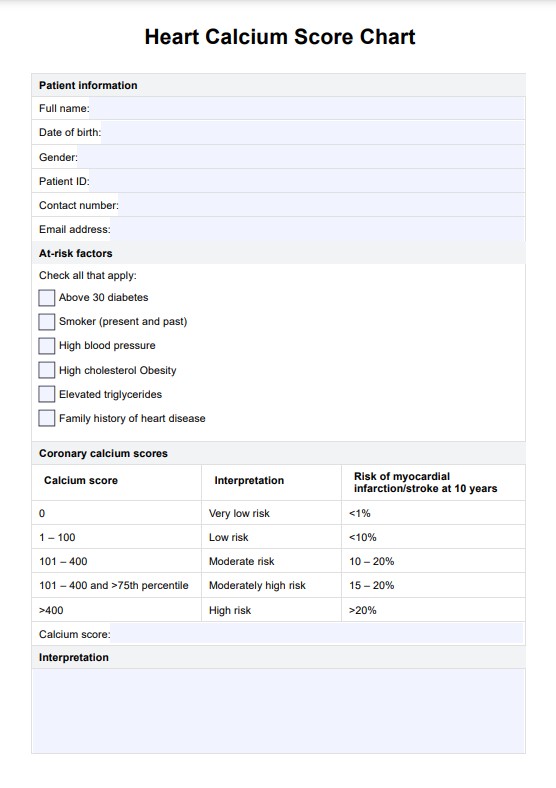Medical professionals will request a heart calcium score for patients who are part of at-risk populations yet present as asymptomatic. This score is invaluable for making predictions about the probability of heart-related events occurring in the future.

Heart Calcium Score
Have this Heart Calcium Score Chart on hand when analyzing and interpreting heart calcium scores. Download our free template.
Heart Calcium Score Template
Commonly asked questions
A Heart Calcium Score Chart is typically used to interpret the results of a CT scan and predict the probability of future cardiac injury. They are well-utilized for asymptomatic patients who have multiple risk factors, such as a family history of heart disease and high cholesterol.
Medical professionals use a Heart Calcium Score Chart to interpret the results from a CT scan and make predictions about the risk of future heart attacks or strokes. Collecting these results is painless and non-intrusive and provides fantastic preventive care.
EHR and practice management software
Get started for free
*No credit card required
Free
$0/usd
Unlimited clients
Telehealth
1GB of storage
Client portal text
Automated billing and online payments











